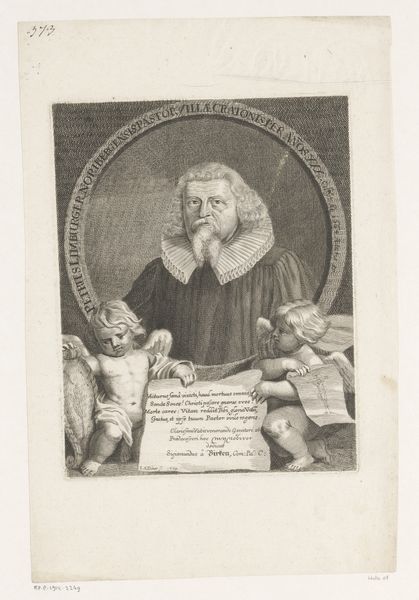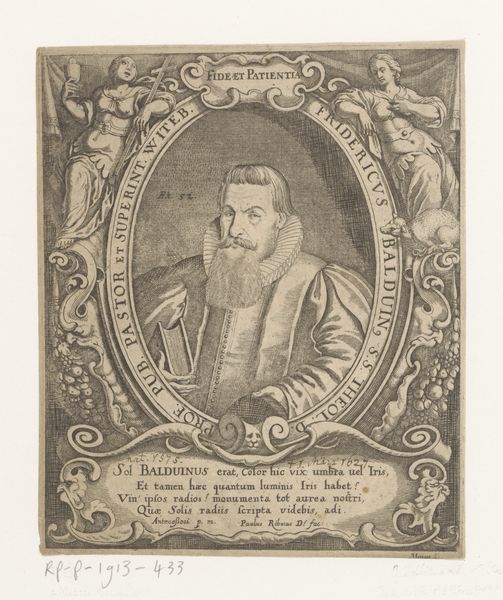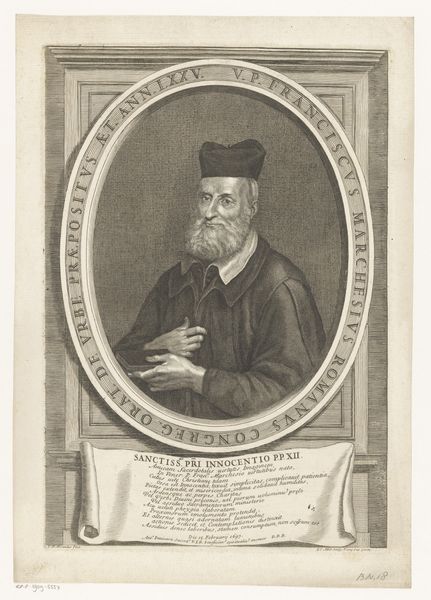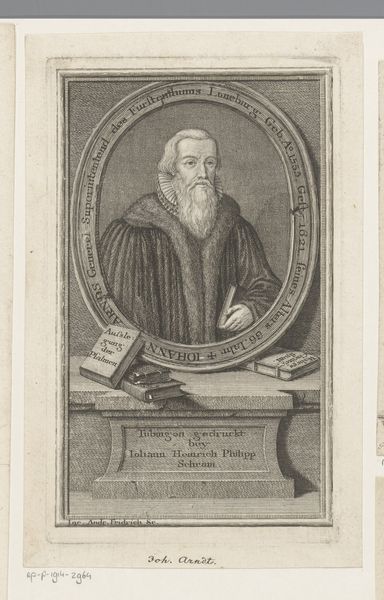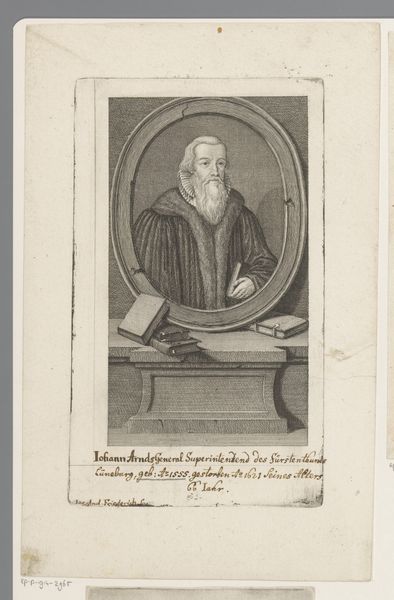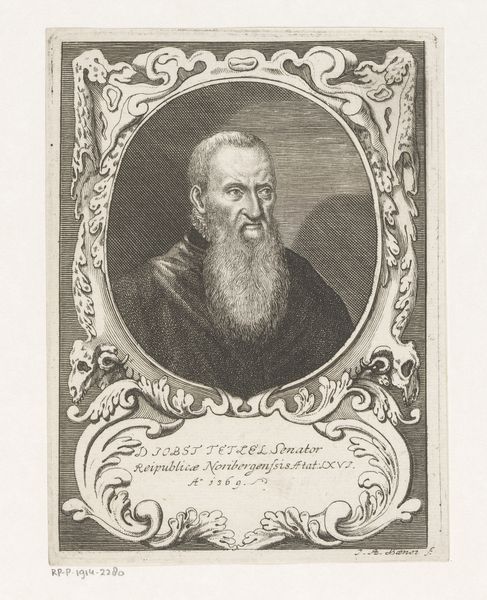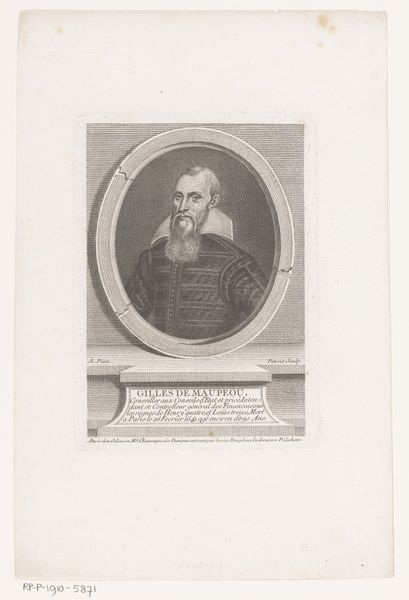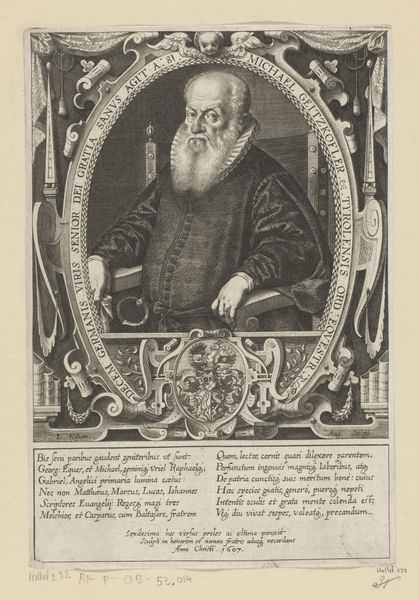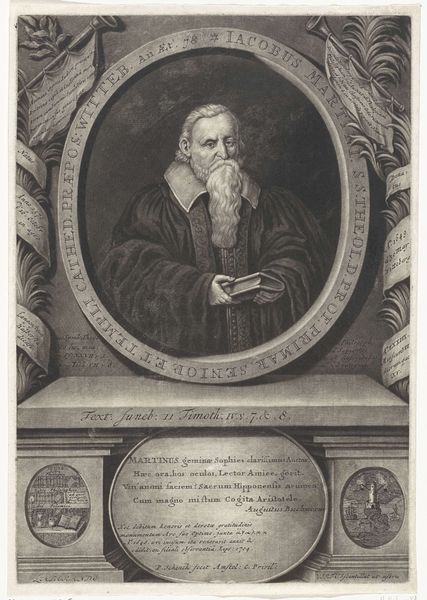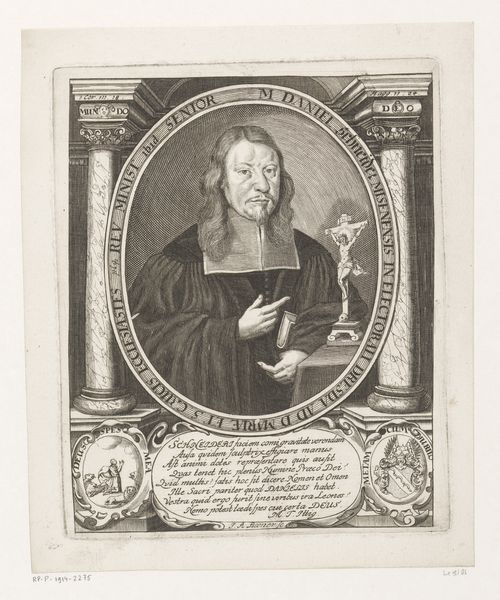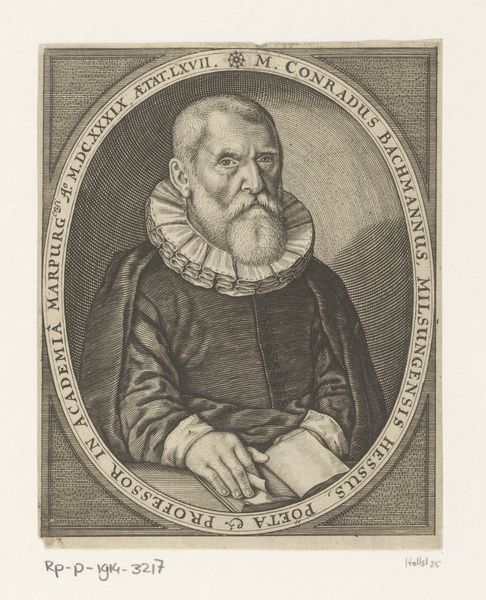
print, engraving
#
portrait
#
aged paper
#
baroque
# print
#
old engraving style
#
academic-art
#
engraving
Dimensions: height 151 mm, width 188 mm
Copyright: Rijks Museum: Open Domain
Curator: Looking at this print, created sometime between 1700 and 1749 by M. Weismüller, one immediately notices the traditional framing. It’s an engraving, a portrait of Johann Arndt, set within an oval frame and presented almost like a sculpted relief. The text below adds another layer of formality. Editor: It strikes me as both solemn and studious. The subject, Arndt, is posed mid-writing, and his gaze seems fixed on some distant thought, or perhaps a divine revelation? His clothing – the fur-lined robe and the ruff – it’s all so meticulously rendered. What can you tell us about this man? Curator: Johann Arndt was a German Lutheran theologian, a prominent figure in the development of Pietism. That probably explains the intensity you noticed. The engraving itself, typical of the Baroque period, reflects Arndt's growing posthumous fame and influence within religious circles. Prints like this were important for disseminating his image and, by extension, his ideas. Editor: I'm intrigued by his gesture. He's pointing with his left hand towards the open book while holding a quill in the other. This iconography suggests he is an interpreter, a guide. It seems the print is subtly making the case for his spiritual authority. Would you agree that that period was preoccupied with asserting authority through imagery like this? Curator: Absolutely. After the Reformation, portraits played a vital role in establishing and solidifying the status of religious leaders. Also, Weismüller likely never met Arndt. This is an interpretation of an interpretation, which makes one question its authenticity in representing Arndt. However, it succeeds wonderfully as a tool of veneration. Editor: Considering how prints were copied and circulated at that time, the print format almost elevates Arndt into an archetype – the wise teacher, divinely inspired. Its symbols aren't accidental. It presents a curated version of the man and his message, doesn't it? Curator: Precisely. The print operates as a cultural artifact reflecting the evolving perception of Arndt, the social functions of portraying and distributing a leader, and a larger commentary on the politics surrounding religious belief and image dissemination. Editor: It really illustrates how an image becomes a symbol, and that a symbol could be an incredibly powerful tool, particularly within specific communities, for reinforcing shared beliefs. Thank you, that helps clarify a lot about how that artwork and Arndt's imagery fits into the 18th century. Curator: It has been my pleasure!
Comments
No comments
Be the first to comment and join the conversation on the ultimate creative platform.
